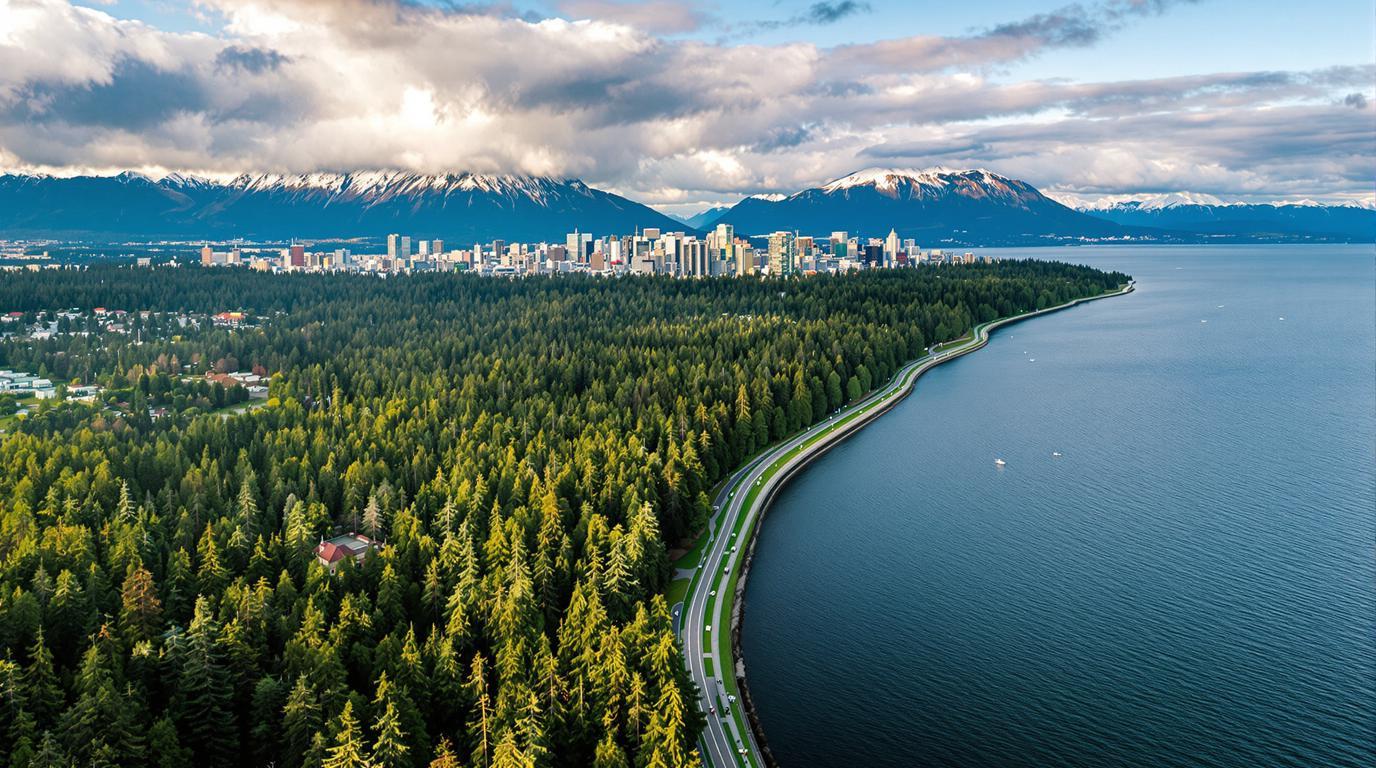Vancouver’s Stanley Park is more than just a green space – it’s a 400-hectare wonderland where pristine wilderness meets urban convenience. This coastal rainforest peninsula, jutting out from downtown Vancouver, consistently ranks among North America’s top urban parks, yet many visitors barely scratch the surface of its remarkable offerings.
A natural paradise with an untold history
Before becoming Vancouver’s crown jewel in 1888, this land was home to Indigenous peoples for thousands of years. The park showcases this heritage through the striking collection of First Nations totem poles at Brockton Point – one of the most photographed sites in British Columbia. These carved cedar monuments tell stories that connect visitors to the area’s original stewards.
Unlike manufactured city parks, Stanley Park remains 90% natural forest. Towering Douglas firs and western red cedars create a cathedral-like atmosphere as you wander its 27 miles of trails. The forest feels ancient and untamed despite being minutes from downtown skyscrapers.
The world-famous Seawall: Vancouver’s coastal masterpiece
The park’s 5.5-mile seawall is the longest uninterrupted waterfront pathway in the world. This engineering marvel took nearly 60 years to complete and provides breathtaking views of the North Shore mountains, the Salish Sea, and Vancouver’s skyline. Locals joke it’s impossible to complete a loop without stopping at least five times to snap photos.
“The seawall isn’t just concrete – it’s Vancouver’s soul. Every morning, I join the parade of joggers, and each time, the mountains look different. Sometimes shrouded in mist, sometimes crystal clear. It’s never the same experience twice,” says longtime resident Maria Chen.
Hidden gems most tourists never discover
While most visitors stick to the seawall, savvy travelers explore the park’s interior. Beaver Lake’s serene wetland ecosystem offers prime bird-watching opportunities. Meanwhile, the mysterious “Girl in a Wetsuit” statue sits atop a boulder in the harbor, overlooked by those rushing between major attractions.
For true solitude, seek out the Seven Sisters Trail, where a cluster of massive trees once stood. Though the original giants fell in a 1960s storm, the area remains hauntingly beautiful and virtually tourist-free. If you’re looking for Earth’s best-kept secrets, this qualifies as a miniature version within an urban setting.
Cultural experiences beyond expectations
The Vancouver Aquarium houses over 65,000 fascinating creatures within the park boundaries. However, for a truly memorable experience, time your visit during summer evenings when the Malkin Bowl hosts “Theatre Under the Stars” performances. Watching Broadway-quality shows as twilight falls over the forest creates pure magic.
“There’s something special about hearing music drift through ancient trees. It’s like the forest itself is enjoying the performance,” notes William Grant, local theater critic.
Where the Pacific Northwest cuisine shines
The park’s teahouses offer quintessential Vancouver dining experiences. The Teahouse at Ferguson Point serves seafood with panoramic ocean views, while the Prospect Point Café provides casual fare with a side of sweeping vistas. Both showcase the Pacific Northwest’s fresh ingredients and multicultural influences.
Stanley Park belongs in the same conversation as America’s most extraordinary national parks despite its urban setting. Its pristine beaches, ancient forests, and cultural significance create an experience that rivals larger wilderness areas.
For photographers seeking that perfect shot, the park offers endless possibilities, much like Europe’s most dazzling hidden gems. Dawn light filtering through morning mist creates ethereal scenes worthy of gallery walls.
Whether you’re cycling the seawall, discovering thousand-year-old cedar trees, or simply watching seaplanes land against mountain backdrops, Stanley Park delivers experiences that embed themselves in memory. It stands as a testament to what’s possible when cities protect rather than develop their natural treasures – a lesson in conservation that more urban centers should embrace.
